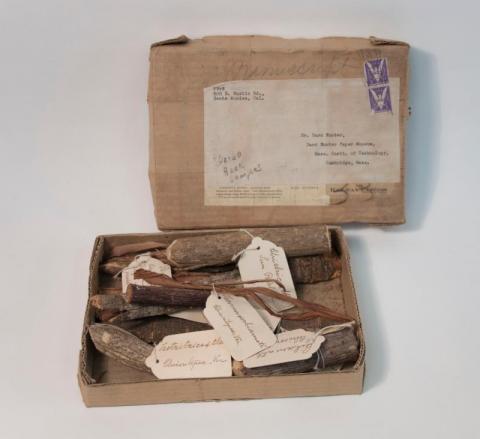Mexican Bark Samples
February 1, 2019
This month's feature is a collection of bark samples. Although they are stored among our collection, they are uncatalogued. In a collection as vast as ours, it is not uncommon to have hidden treasures, like these charming bark samples. Bark samples of this nature are often kept and shared in order to better understand which fibers would be good candidates for pulping and pulling sheets of paper. Samples of this type can either be in the form of solid pieces of a branch including both the bark and meat of the tree or solely the stripped bark.
The six samples shown here feature a variety in shape, size, and texture. These samples were collected by historian Victor Wolfgang Von Hagen, most likely while he was doing research for his book on Aztec and Mayan paper makers in the late 1930's and early 1940's. Because of Dard Hunter's support and involvement in this project (Hunter wrote the introduction to his book), it makes sense that such samples would end up in his hands. These particular samples come from the Mexican paper making villages of San Pablito, Puebla and Chicontepec, Vera Cruz. Today, these villages are best known for their commercial production of bark paper which come from a unique species of ficus. The paper makers from this region are the Otomi Indians which are of Aztec descent and they primarily use paper made from this strain of ficus for the making of paper dolls, or muñecas, which play an important role in their religious practices. Bark samples from these regions are rare, as this type of ficus is native to these villages and not much was known about the villages and their paper making methods until Von Hagen researched them for his book.
We hope that you enjoyed sharing this treasure from our collection! We'll be back next month with another artifact. Have a great February!
Category: Paper Fibers/Pre Paper
Region of Origin: Latin America
Keywords:
Bark Cloth

